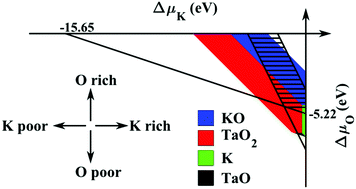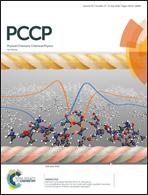First-principles studies of polar perovskite KTaO3 surfaces: structural reconstruction, charge compensation, and stability diagram†
Abstract
Polar perovskite oxides are of considerable interest for developing advanced functional materials with exceptional electronic properties for their unique polar characters. A cleavage of polar perovskite oxides along the charged layers leads to an electrostatic instability on the cleaved surfaces, and a charge compensation is required to stabilize these surfaces. In this work, we have systemically studied 25 types of surface models of polar KTaO3 perovskite oxide, including (001), (110), and (111) surfaces with various types of surface terminations, using first-principles electronic structure calculations. The surface structural reconstruction, electronic structures, and thermodynamic properties including cleavage energy and surface energy are investigated. The phase stability diagrams of the (001), (110), and (111) surfaces are constructed with respect to the chemical potentials of component elements. The KO(001), O(110), and KO2(111) terminations are more likely to be formed than other types of terminations in corresponding surfaces, consistent with experimental observations on KTaO3(001) surfaces. This work provides useful guidance for accurate control of surface morphology for tailing functional properties of polar KTaO3 perovskite oxide.



 Please wait while we load your content...
Please wait while we load your content...
